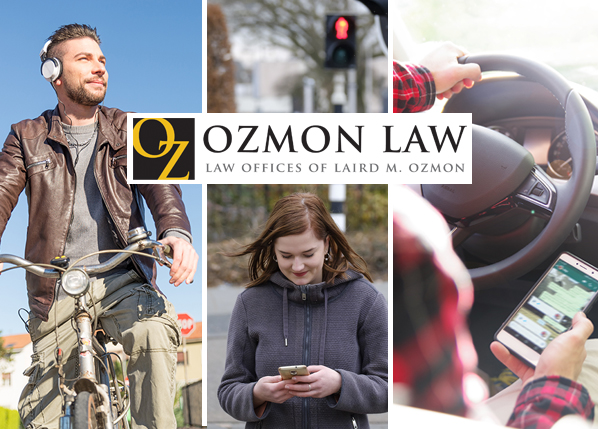Oct 18, 2018 | Law News, Ozmon Law News

Recent news events have highlighted the importance of being a compelling witness on your own behalf. The quality of witness’s presentation both superficially and substantively directly impacts one’s ability to make a case. In the context of a personal injury claim, if the plaintiff’s case is populated by credible, quality witnesses, the likelihood of recovery and the value of the case increase substantially. In my experience, when a plaintiff makes an excellent presentation on deposition, I can expect an offer of settlement to come soon thereafter.
There is a lesson in how the witnesses have comported themselves at the Congressional hearings that have recently riveted the nation. Balancing thoughtful, thorough preparation with instilling the confidence in the witness to be authentically themselves takes the supreme skill and experience of a trial lawyer.
First, appearance matters. Well-groomed, appropriately dressed people exude confidence. Looking unkempt or wearing something extremely informal, or even too formal (picture an evening gown at a backyard BBQ) gives the appearance of being out of one’s element—the proverbial fish out of water.
Demeanor is key. Employ coping strategies tore main calm. It is key to tell your story clearly and concisely. Use tips to keep yourself from appearing too anxious, speaking quickly or without thinking, such as counting to three or taking deep breaths. If you find yourself so focused on the answer that you’ve stopped listening to the question, stop and reset, or ask for a break.
Confidence naturally flows from preparation. An excellent trial lawyer will patiently take a witness through the impending proceeding telling her what to expect, reviewing the facts, documents, proffering sample questions and practicing common scenarios, i.e. what to do when there is an objection, how not to guess.
Your attorney should discuss any potential weaknesses. You will strategize about how to respond truthfully while minimizing the shortcomings. A strategy common among defense attorneys is to trot out the complaint and go through each allegation with the plaintiff at a deposition. This is designed to undermine the credibility of claim if she is not prepared and/or hasn’t seen the document.
Being a good witness doesn’t come naturally topmost. This is a team effort, a plaintiff’s attorney cannot testify for his client, but he can give her the tools to be her most compelling advocate.

Attorney Laird M. Ozmon
Sep 19, 2018 | Law News, Ozmon Law News

Tort immunity is a concept created by lawmakers to balance the interests of a public entity funded by taxpayers against the interests of individual taxpayers in obtaining compensation for an injury caused by the wrongful conduct of a public entity or employee. It’s the classic tension between the common good and individual interest.
Breaking down the term, a “tort” is a wrong for which you may recover from a wrongdoer. “Immunity” is a legal shield from liability for that wrong.
The Illinois Local Governmental and Governmental Employees Tort Immunity Act (“the Act”) has a long, tortured history of interpretation by the courts. So when a plaintiff reports an injury caused by a condition of a roadway or sidewalk, or an incident involving a public official, plaintiff’s attorneys face an uphill battle.
Plaintiffs often base liability on the duty of a local public entity to maintain its property in a reasonably safe condition contained in the Act. Government defendants seek to undermine this duty by arguing discretionary immunity applies to the facts of the case. The Act provides immunity for an exercise of discretion (i.e. a decision not to repair a road based on expense) but provides no such protection for ministerial acts. “Ministerial acts” are performed in a prescribed manner, mandated by legal authority and without reference to the official’s discretion (i.e. failure to place road sign according to legal requirements).
Recently, the Illinois Supreme Court held in Monson v. City of Danville the City could not invoke discretionary immunity because it did not present any evidence documenting the decision not to make the repair at issue. This clarified the issue; even though a decision to repair would be discretionary, if the governmental entity did not consider the repairs it exercised no discretion, thus no immunity. Monson gives plaintiffs a new ray of hope for recovery against governmental entities.
If you think you were seriously injured and a governmental entity or employee was at fault, please call Laird M. Ozmon at 815.727.7700.

Attorney Laird M. Ozmon
Sep 7, 2018 | Law News, Ozmon Law News

gavel and stethescope on white background
My blogs this summer have touched on a recurring theme, how a plaintiff’s contributory negligence can diminish or defeat her case. As the best time of year to be in Chicago comes to a close, I have to bring this discussion full circle with one final observation I see in the great outdoors—the survival instinct is dying. And this evolutionary change will be judged in a courtroom.
You know what I’m talking about, it’s everywhere. Bikers wearing headphones, pedestrians looking at their phones oblivious to their surroundings, drivers texting, no one in the roadway using signals. I admit, I’m a student of the “old school” that taught engaging the human senses as a matter of life and death. “Stop. Look. Listen.” “Look both ways when you cross the street.” This is not just the stuff of Darwin, it’s what we learn in kindergarten. So why are people so willing to render themselves, deaf, dumb and blind and blithely entrust their well-being to the rest of the population?
While this cultural phenomenon did not start with the Smartphone (remember the Walkman?), it has proliferated in that tiny, powerful technological device. Studies have shown accidents due to distraction are on the rise: https://www.usatoday.com/story/money/cars/2018/02/28/pedestrian-fatalities/376802002/. Those who are so dependent on it, so addicted to it or the magnitude of distraction it provides, that they cannot tear themselves away need to . . . “step away from the phone.”
Illinois law does not allow you to relinquish responsibility for yourself and your own safety; thus the contributory negligence defense. For instance, if you are so busy looking at or talking on your phone that you enter an intersection without looking both ways or obeying a traffic control device, you will likely be found more negligent than the driver who hit you. Your mobile phone is no longer your closest confidante, it is a storage device for potential evidence against you, i.e. the time you sent or read a text, when you were on a call, etc. After being struck on your bicycle in the middle of the street, if you are found wearing earbuds or headphones (the noise-cancelling ones are really just insane), the driver who honked his horn as he was properly approaching when you made a sudden lane change may not be held responsible. All of this means you may not recover for your injuries because you were contributorily negligent.
So here’s my pitch, as a father, not a plaintiff’s attorney: reengage your senses.
STOP! Take in the world around you. LOOK! Use your eyes, not only to protect you from imminent danger, but to see that smiling stranger, carefree dog, or sunset. LISTEN! Use your ears, to hear warning signs or vehicles approaching, and the talented street musician, or old friend calling from across the street or train platform. I would be happy knowing you took this advice so you never needed my legal advice.

Attorney Laird M. Ozmon
Aug 21, 2018 | Law News, Ozmon Law News

Construction accidents typically occur due to someone’s negligent actions. Negligence occurs when something is done that a reasonably careful person wouldn’t do, or when something isn’t done that should have been. Damages to the person affected may include pain, suffering, disability, disfigurement, medical expenses, and loss of income. If you’re the victim of a construction accident, here are 3 things you should do.
- Seek medical attention immediately. This will document any injuries so that the evidence may be used at a later date. Don’t ignore medical treatments or doctor visits, and follow the prescribed treatment and medication plans. Failure to do this can have a negative impact on any potential financial compensation. Delaying medical treatment can have a similar negative impact, as the seriousness of the injuries will be in question.
- Preserve any evidence, and gather all relevant facts and documentation. Take photographs of any serious injury or damage caused by a construction accident. Create a written summary of the facts of the accident, including how and when it occurred, the type of injury, expenses lost, and any related insurance and medical information. Document any witnesses to the accident, and request a copy of police reports and any incidence reports.
- The most important thing you can do if you’re the victim of a construction accident is to contact a personal injury lawyer to help build your negligence case. Laird Ozmon, a personal injury attorney based in Joliet, has dedicated his practice solely to the representation of seriously injured victims and their families for over 30 years, and handles cases locally, regionally, and nationally as a top trial lawyer. After seeking medical attention, contact Ozmon Law before speaking with or providing any recorded or written statements to insurance companies or anyone related to the construction company. Don’t ever sign any legal or medical documents prepared by an insurance company, the construction company, or their lawyers without the presence or consent of your own personal injury lawyer.

Attorney Laird M. Ozmon
Aug 1, 2018 | Law News, Ozmon Law News

In my last blog I touched on the concept of a plaintiff’s negligent conduct that can often derail his case and deflate expectations of a recovery. This is called contributory or comparative negligence, and, in the worse case scenario, it can be fatal to a plaintiff’s case.
Illinois is a modified comparative fault state. This means if an injured victim is determined to have been negligent and that negligence contributed, along with the defendant’s negligence, to cause the injury, the plaintiff’s recovery will be reduced. The jury must determine the percentage of negligence attributable to the plaintiff. Any recovery awarded to the plaintiff will be reduced by this percentage. BUT, and this is a big one, if the plaintiff is found to be more than fifty percent negligent, the plaintiff will recover nothing.
In my experience defendants will raise the specter of contributory negligence even if there is no evidence to support it. It is my job to keep this cancer out of the courtroom and out of the minds of jurors when the defendants have not complied with Illinois law in raising the issue. I’m a fierce advocate when it comes to filing pre-trial motions seeking to bar this evidence.
Illinois law requires the defendants to plead contributory negligence when they answer the plaintiff’s complaint in what is called an affirmative defense. If they don’t, then the law mandates they be barred from bringing the issue of blaming the victim before the jury. Ultimately, the defendant must offer evidence to support the contributory negligence affirmative defense, if they fail to do so, they cannot raise the issue before the jury.
This rarely deters defendants who masquerade it as something else. They claim the evidence that the victim of malpractice failed to follow-up with their physician is benign evidence describing their course of treatment and unrelated to their own negligence. Or they throw out an amorphous allegation unsupported by the evidence that a slip and fall victim failed to keep a proper lookout or exercise due care.
In the recent case of Lakin v Casey’s Retail Company, the Illinois Appellate Court sided with the plaintiffs. It affirmed the trial court’s refusal to allow the defendants to instruct the jury the plaintiff had the burden of proving he was not guilty of failing to keep a proper lookout or exercising proper care when he slipped and fell in a store. The court admonished the defendants for not pleading any facts beyond the vague and conclusory allegations of failure to keep a proper lookout or to use proper care that would substantiate contributory negligence. As plaintiff’s attorneys we must be vigilant in defusing this nefarious “blame game” seeking to shift responsibility to our clients who are innocent victims.

Attorney Laird M. Ozmon
Jul 23, 2018 | Law News, Ozmon Law News

It’s a jungle out there. In the spirit of environmental consciousness our highways and byways are filled with bikes and scooters, E-bikes and motorized scooters, mopeds or skateboards, all in a state of frenetic locomotion. In my practice I have found these non-traditional vehicles, motorized or not, generate confusion concerning the rules that apply to them and how Illinois law treats a rider who is injured in accident.
The basic premise for anyone operating a vehicle on an Illinois roadway is they must follow the Rules of the Road—that means you: bikers, motor scooters, skateboarders, etc. So don’t think you can blow a stop sign at a 4-way intersection when a car gets there first. Yes, there is etiquette, for our non-traditional vehicles, a driver’s nod of recognition or a wave of the hand means she cedes the right of way to you. Notwithstanding this, you must always protect yourself by expecting to be treated like any other vehicle on the road even though you don’t have two tons of steel wrapped around you for protection.
All non-traditional vehicles must follow sidewalk rules. The general rule is, if its motorized, it is not allowed on the sidewalk. Think of your mom exiting the door of your local bakery and getting wiped out by a Boosted Board traveling at 20 miles per hour.
State law does not explicitly prohibit bikers from riding on sidewalks. Local ordinances dictate the rules. Some have age limits, others allow it in certain areas and prohibit it in others as dictated by signage. In all cases, when riding on the sidewalk, remember pedestrians have the right of way and the law protects them over riders. Of course, the proliferation of bike lanes has added a new wrinkle and pedestrians (and parked cars) must heed the markings specially dedicated to bikes.
With the invention of new and faster vehicles, i.e. Boosted Boards (motorized skateboard) and One-Wheels (motorized platform with a wheel), the definition of a vehicle and the rules that apply to it are more muddled. For instance, in the City of Chicago it is illegal to ride a skateboard on a roadway or sidewalk in a business district. Chicago Code, 9-80-200. The Illinois Vehicle Code defines a “business district” broadly where there is a roadway with buildings in use for business or industrial purposes within any 600 feet. Although the ordinance is not specific, this likely prohibits use of a motorized skateboard, or similar vehicle, on a street in a city business district. There goes your new ride to work!
Not following the rules that apply to you has consequences in the context of a claim or lawsuit following an accident. If you are considered more than 50% at fault, your recovery is barred. This means even if someone is found to have been 49% negligent when they struck you on your E-bike, you cannot recover any money. If you violate an ordinance or statute that is designed to protect human life or property, like the above skateboard example, that is presumptive evidence of your negligence, and potentially weakens your case. So for everyone’s sake, lose the earbuds, follow the Rules of the Road and sidewalks, protect yourself and watch out for others.

Attorney Laird M. Ozmon







